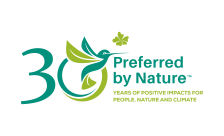Timber Risk Score 5 / 100 in 2018. The Timber Legality Risk Assessment contains an evaluation of the risk of illegality in Malaysia Peninsular for five categories and 21 sub-categories of law. We found:
- Specified risk for 19 sub-categories.
- No legal requirements for 2 sub-categories.
This page provides an overview of the legality risks related to timber produced in Peninsular Malaysia. There are separate timber risk assessments for Sabah and Sarawak.
Peninsular Malaysia has 5.8 million hectares of forest, covering 44% of the land area. Peninsular Malaysia accounted for 28% of the whole country’s timber production in 2012, with total annual log production averaging 4.2 million m3/year during 2010-2014 (FDPM, 2014).
The main threats to forests in Peninsular Malaysia include illegal logging, clearing for plantations, and damage from invasive species. Chatham House has estimated that 35% of timber produced in the whole of Malaysia is illegal (Hoare, 2015). Numerous legality risks are present in timber supply chains in Peninsular Malaysia. The risks are wide-ranging and relate to all categories of law. If you are sourcing timber from Peninsular Malaysia you should take care to ensure the extensive risks identified are not present in your supply chains, or have been sufficiently mitigated.
This risk assessment was prepared between 2016-2018 according to the FSC-STD-40-005. The approved FSC Risk Assessment can be downloaded in the FSC Document Centre. ONLY Risk Assessments that have been formally reviewed and approved by FSC can be used by an FSC candidate or certified companies in risk assessments and will meet the FSC standards without further verification.
Score: 48 / 100 in 2021
Rank: 62 out of 180 countries in 2021
There is a ban on the export of rubberwood (Hevea brasiliensis) from Peninsular Malaysia, effective from July 2017.
There are currently no armed conflicts in Malaysia according to the Council on Foreign Relations' Global Conflict Tracker.
According to the Uppsala Conflict Data Program there were 71 deaths in 2010-2019.
VPA status: Negotiating
CITES appendix II: Aquilaria spp., Dalbergia spp., Gonystylus spp., Taxus chinensis, Taxus wallichiana,
Rauvolfia serpentina.
FSC Certified Forest Area (in Malaysia): 710,311 hectares (4 December 2019)
PEFC Certified Forest Area: 4,376,622 hectares (31 December 2019).
Information Gathering
Timber sources
- Find out the different sources of legal timber
- Determine which source type your timber comes from
| Timber source type | Description of source type |
|---|---|
|
Natural forest in the Permanent Forest Reserve not being cleared for plantation/other land use |
Timber from natural forests in the Permanent Forest Reserve that is being managed as a natural forest (i.e. it is regenerated after harvest) and not being used for clearance or conversion. A harvest permit or license is required. |
|
Natural forest in Permanent Forest Reserve being cleared for plantation/other land use |
Timber from natural forests in the Permanent Forest Reserve that has been cleared as part of a timber plantation concession (i.e. concession for the clearance of natural forest for conversion to monoculture timber plantations). A harvest permit or license is required. |
| Plantation in Permanent Forest Reserve | Timber from a plantation (e.g. Acacia, Eucalyptus, rubberwood) in the Permanent Forest Reserve. A harvest permit or license is required. |
| State land and Alienated land |
Timber from the clearance of natural forest on:
Timber plantations on state and alienated land are rare. Timber plantations that are established on forest reserves are sometimes later excised to state land. Alienated land is usually used for growing oil palm or rubber, rather than trees for timber. A harvest permit or license is required. |
| Agricultural land (primarily rubberwood) |
Timber from private 'agricultural' estates on alienated land. This are mainly rubberwood plantations that are being cleared for oil palm or for another rotation of rubber (i.e. grown primarily for latex rather than timber). Timber from agriculture on state land includes rubberwood harvested from rubber plantations. Very rarely, there are small agricultural rubber plantations (i.e. planted primarily for latex) in the Permanent Forest Reserve that can be harvested for timber. A harvest permit or license is required. |
Risk Assessment
Risk assessment summary
|
Legal rights to harvest |
|
Taxes and fees |
|
| Timber harvesting activities
|
|
|
Third parties' rights |
|
|
Trade and transport
|
|
Specified risk species
| Common/trade name | Scientific name | Risk information |
|---|---|---|
|
Agarwood |
Aquilaria beccariana |
CITES-listed |
|
Agarwood |
Aquilaria hirta |
CITES-listed |
|
Agarwood |
Aquilaria malaccensis |
CITES-listed |
|
Agarwood |
Aquilaria microcarpa |
CITES-listed |
|
Agarwood |
Aquilaria rostrata |
CITES-listed |
|
Agarwood |
Dalbergia spp. |
CITES-listed |
|
Ramin |
Gonystylus spp. | CITES-listed |
|
Chinese yew |
Taxus chinensis | CITES-listed |
|
Himalayan yew |
Taxus wallichiana | CITES-listed |
Risk Mitigation
Mitigate the risks in your supply chain
Learn which actions we recommended to mitigate the risks associated with the timber sources from Malaysia - Peninsular
Source Certified Materials
NEPCon believes that third party certification (for example FSC and PEFC certification) can provide strong assurances of the legality of the products they cover. Companies seeking to mitigate the risks of sourcing illegal timber should seek to purchase third party certified materials wherever possible.
While the European Timber Regulation does not include an automatic “green lane” for certified products, it does recognise the value of certification as a tool for risk assessment and mitigation. The European Commission says that companies “may rate credibly certified products as having negligible risk of being illegal, i.e. suitable for placing on the market with no further risk mitigation measures, provided that the rest of the information gathered and the replies to the risk assessment questions do not contradict such a conclusion.”
For more information on using certified materials in your due diligence, including how to assess whether a certification system meets EUTR requirements, see the page on Certification and Due Diligence.
Mitigation recommendations
There are six recommended actions to mitigate the risks associated with the timber sources from Peninsular Malaysia:
1. Fully map your supply chain
- Our supply chain mapping tool can help you do this.
2. Obtain and verify documents
- Forest level documents
- Land registry ownership and validity of property deed
- Concession licence
- Management plan, harvest plan and maps (delineate harvesting areas, and protected areas where harvesting is prohibited)
- Timber Extraction Contract
- Harvesting licence
- Environmental impact assessment for FMEs greater than 500 ha.
- Documents or records of consultations with local communities for any land or rights dispute resolutions
- Tax related documents
- Receipts for payments of harvesting related royalties, taxes, harvesting fees and other charges
- Volumes, species and qualities given in sales and transport documents shall match the paid fees
- Harvesting permits. These should provide information on origin. If the timber originates from cleared areas, royalty stamps on logs should be verified
- Removal Passes. Verify that the species and volumes match the royalty payments
- Tax invoices
- Health and safety related documents
- Health and Accident records
- Employment related documents
- Records of number of people employed
- Compliance Report
- Sustainable Forest Management Licence Agreements
- Work permits for foreign workers
- Trade and transport documents
- Review transfer pricing documentation to prove market price-based transactions
- CITES permits (verified by MTIB) for CITES species
3. Consult stakeholders
- Confirm that the registration of FME has been granted following legally prescribed processes
- Confirm that legal procedures for obtaining concession licenses have been followed
- Conform that the harvest permit is valid
- Confirm that the forest management plan has been approved according to legally prescribed process
- Confirm that operations or rights for conducting the established activities are not subject to court orders or other legally established decisions to cease operations
- Confirm that land tenure rights are clear and there are no land conflicts
- Confirm that any public allegations of corruption in awarding of concession licence have been rebutted publicly
- Confirm that customary rights are observed during harvesting activities
- Workers confirm that they are aware of requirements for reduced impact logging
- Workers confirm that they receive legal wages (and that wages have not been deducted to cover work permits of foreign workers), that working hours, living conditions, insurance are adequate and legal, and that travel documents are not being withheld by employers
4. Carry out on-site verification
- Confirm that contractors have a Timber Extraction Contract
- Confirm that management and harvesting plans are implemented
- Confirm that maps are accurate
- Confirm that harvesting takes place within limits given in the harvesting permit
- Confirm that information regarding area, species, volumes and other information given in the harvesting permit is correct and within limits prescribed in the legislation
- Confirm that procedures on reduced and low impact harvesting, if specified in the harvesting license, are being followed in the forest
- Confirm that mitigation measures as prescribed in the environmental impact assessment are implemented
- Confirm that the FME observes occupational health and safety requirements by all personnel involved in harvesting and forest management activities
5. Conduct targeted timber testing on sample of purchased materials
- Conduct timber testing on samples of purchasd material to verify the species or origin of timber, where appropriate
6. Avoid / do not buy
- Avoid products that include materials bought at spot- and/or open-markets













